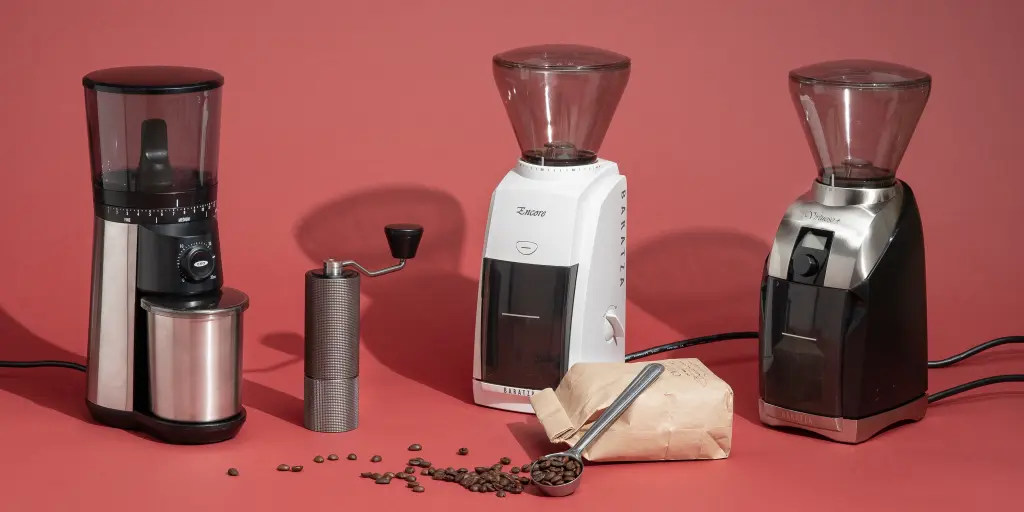Coffee grinders are a must-have for any coffee enthusiast. Whether you’re a die-hard espresso fan or a lover of drip coffee, having the right grinder can make all the difference when it comes to flavor and freshness.
But what about espresso beans? Can you use a regular coffee grinder to grind espresso beans? The short answer is yes, but there are some important considerations to keep in mind before you start grinding those tiny beans.
In this article, we’ll take an in-depth look at the differences between standard and espresso grinders, as well as how to safely use your existing grinder for espresso beans without damaging it.
Different Types of Coffee Grinders
There are several types of coffee grinders available on the market, including blade grinders, burr grinders, and manual grinders.
Blade grinders are the most common type of grinder and they work by chopping up the coffee beans with a spinning blade. Burr grinders, on the other hand, use two abrasive surfaces to grind the beans to a consistent size.
Manual grinders use a crank to turn a grinding mechanism that grinds the coffee beans.
Pros and Cons of Using a Blade Grinder for Espresso Beans
While blade grinders are the most affordable type of coffee grinder, they are not the best choice for grinding espresso beans. The main issue with blade grinders is that they can produce an inconsistent grind, which can negatively affect the taste of the espresso. Additionally, blade grinders are not very durable and are more likely to break over time.
Pros and Cons of Using a Burr Grinder for Espresso Beans
Among espresso enthusiasts, burr grinders are the preferred grinder type because they produce a consistent grind. This consistency is important for making a good espresso since the grind size affects the extraction time of the espresso. Moreover, burr grinders will last longer than blade grinders and are more durable. Burr grinders are more expensive than blade grinders, however.
Pros and Cons of Using a Manual Grinder for Espresso Beans
If you want an espresso grind that is durable and consistent, manual grinders are a good choice. These grinders are constructed from high-quality materials and are designed to last a long time.
Furthermore, manual grinders are portable, so they are ideal for espresso makers traveling with their equipment. Manual grinders can be time-consuming to use compared to electric grinders, which is their biggest disadvantage.
How to Use a Coffee Grinder for Espresso Beans
Using a coffee grinder is one of the best ways to get a consistent grind for your espresso beans.
Here’s how to do it:
1. First, make sure that your coffee grinder is clean and dry. Any moisture in the grinder can cause the beans to clump together and make it difficult to get a consistent grind.
2. Next, measure out the amount of espresso beans you need for your recipe. For one cup of espresso, you’ll need about 2 tablespoons of beans.
3. Place the beans in the grinder and turn on the machine. Start with a coarse grind setting and gradually increase the fineness until you reach the desired consistency. It should take less than 30 seconds to grind 2 tablespoons of beans on a medium-fine setting.
4. Once you’ve reached the desired consistency, stop the grinder and tap it gently to release any remaining grounds into your espresso maker or filter basket.
And that’s it! Using a coffee grinder is an easy and effective way to get perfectly ground espresso beans every time. Just remember to clean your grinder afterwards so that those pesky grounds don’t end up in your next cup of coffee!
Conclusion
In conclusion, the type of coffee grinder you use to grind espresso beans will affect the taste of your espresso. Blade grinders are not recommended for grinding espresso beans because they produce an inconsistent grind.
Burr grinders are the preferred type of grinder for espresso because they produce a consistent grind that is essential for making a good espresso.
